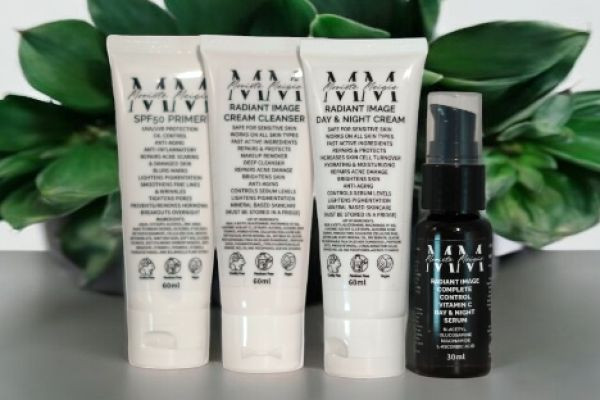N-Acetyl Glucosamine (NAG)
N-Acetyl Glucosamine is a derivative of glucose that plays a crucial role in skin health. Here are its primary benefits:
- Hydration and Plumping: NAG is a precursor to hyaluronic acid, which helps maintain skin moisture and plumpness1.
- Anti-Aging: It promotes collagen production, reducing the appearance of fine lines and wrinkles2.
- Hyperpigmentation Reduction: NAG inhibits tyrosinase, an enzyme involved in melanin production, helping to fade dark spots and even out skin tone3.
- Gentle Exfoliation: It provides mild exfoliation, improving skin texture without irritation1.
Niacinamide
Niacinamide, a form of Vitamin B3, is a versatile ingredient with numerous benefits:
- Sebum Regulation: It helps control oil production, making it beneficial for acne-prone skin4.
- Anti-Inflammatory: Niacinamide reduces inflammation, which can help calm acne and other inflammatory skin conditions4.
- Barrier Function: It enhances the skin’s barrier function, reducing transepidermal water loss (TEWL) and improving hydration4.
- Brightening: Niacinamide fades age spots and hyperpigmentation, leading to a more even complexion4.
L-Ascorbic Acid (Vitamin C)
L-Ascorbic Acid is a potent antioxidant known for its skin-brightening and anti-aging properties:
- Antioxidant Protection: It neutralizes free radicals, protecting the skin from environmental damage5.
- Collagen Synthesis: Vitamin C boosts collagen production, improving skin elasticity and reducing wrinkles5.
- Brightening: It helps fade hyperpigmentation and brightens the skin for a radiant complexion5.
- Anti-Inflammatory: L-Ascorbic Acid can reduce inflammation, aiding in the treatment of acne and other inflammatory conditions5.
Hyaluronic Acid
Hyaluronic Acid is a powerful humectant that draws moisture into the skin:
- Intense Hydration: It can hold up to 1,000 times its weight in water, providing deep hydration and plumping the skin1.
- Skin Repair: Hyaluronic Acid supports skin repair and regeneration, promoting a healthy skin barrier1.
- Anti-Aging: By keeping the skin hydrated, it reduces the appearance of fine lines and wrinkles1.
- Compatibility: It is suitable for all skin types, including sensitive and acne-prone skin1.
Combining These Ingredients
When used together, these ingredients can complement each other, enhancing their individual benefits. For example, combining NAG with Niacinamide can amplify their brightening effects and improve skin texture1. Similarly, using L-Ascorbic Acid with Hyaluronic Acid can boost hydration while providing antioxidant protection5.
Conclusion
Incorporating N-Acetyl Glucosamine, Niacinamide, L-Ascorbic Acid, and Hyaluronic Acid into your skincare routine can provide a comprehensive approach to achieving healthy, radiant skin. Each ingredient offers unique benefits, and together, they can address a wide range of skin concerns, from hydration and anti-aging to brightening and barrier repair.
Would you like more information on how to incorporate these ingredients into your routine or have any specific skincare concerns you’d like to address?
5: Science Becomes Her 1: The Pink Foundry 4: Humblebee & Me 2: The Naked Chemist 3









